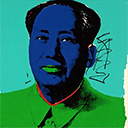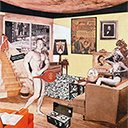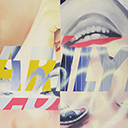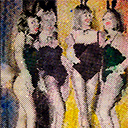What should I know about Pop Art?
By creating paintings or sculptures of mass culture objects and media stars, the Pop art movement aimed to blur the boundaries between “high” art and “low” culture by using commonplace objects (such as comic strips, soup cans, road signs, and hamburgers). The concept that there is no hierarchy of culture and that art may borrow from any source has been one of the most influential characteristics of Pop art.
It could be argued that the Abstract Expressionists searched for trauma in the soul, while Pop artists searched for traces of the same trauma in the mediated world of advertising, cartoons, and popular imagery at large. But it is perhaps more precise to say that Pop artists were the first to recognize that there is no unmediated access to anything, be it the soul, the natural world, or the built environment. Pop artists believed everything is inter-connected, and therefore sought to make those connections literal in their artwork.
Pop artists seemingly embraced the post-WWII manufacturing and media boom. Some critics have cited the Pop art choice of imagery as an enthusiastic endorsement of the capitalist market and the goods it circulated, while others have noted an element of cultural critique in the Pop artists’ elevation of the everyday to high art: tying the commodity status of the goods represented to the status of the art object itself, emphasizing art’s place as, at base, a commodity.







